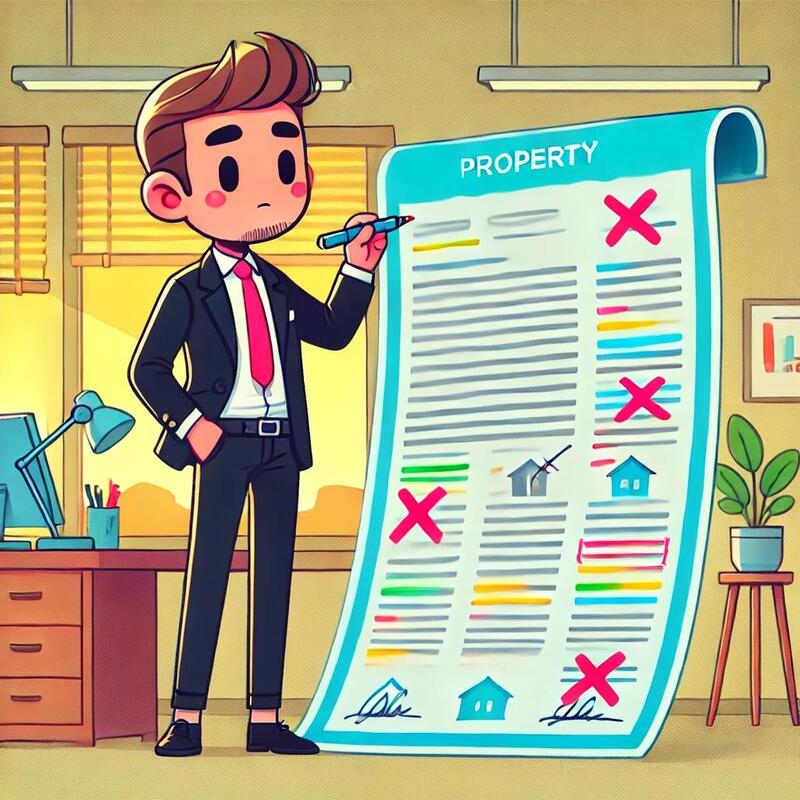Corrective Deed California: How to Fix Errors in Property Deeds
Need to fix errors in a property deed? Learn how to file a corrective deed in California, ensure your title is clear, and keep your estate in order.

Mistakes on property deeds—whether it's a typo, misspelled name, or incorrect property description—are more common than you'd think. Fortunately, California law allows property owners to correct these errors using a corrective deed. Correcting your property records is essential not just for the smooth transfer of ownership but also for maintaining the accuracy of your estate planning documents and managing your digital inheritance. Let's explore how you can file a corrective deed and ensure your estate remains intact.
What is a Corrective Deed? #
A corrective deed is a legal document used to amend errors on a previously recorded deed. This might include fixing typos, correcting property descriptions, or addressing missing details. Importantly, a corrective deed does not change the ownership terms but clarifies inaccuracies to ensure a clear title for the property. For example, if there’s an error on your state of California grant deed form, you can file a corrective deed to make it right. By filing a corrective deed, you’re not creating a new deed but amending the original. The corrective deed references the incorrect original and provides the correct information, which is necessary for maintaining a clean chain of title.
Steps to File a Corrective Deed #
Correcting a deed requires careful attention to detail. Here’s how you can fix property deed errors in California:
- Obtain a Copy of the Original Deed: Secure a copy of the original deed containing the mistake.
- Prepare the Corrective Deed: Clearly state the errors and the correct information in the new document. Specify details like corrected names or property descriptions.
- File the Corrective Deed: Submit it to the California county recorder’s office, where the original deed was filed. This updates the public record with the correction.
When to Use a Scrivener’s Affidavit #
For minor mistakes that don’t affect the legal aspects of ownership, a Scrivener’s Affidavit might be used instead of a corrective deed. This affidavit, typically reserved for minor errors like spelling mistakes, is a simpler legal instrument to file. However, both options must be recorded in the same office where the original deed was filed.
Importance of Correcting Deed Errors Quickly #
Failing to correct an error on a deed could lead to complications in property transactions. An inaccurate deed might block property sales, create legal disputes, or hinder the transfer of ownership. For example, an incorrect property description could cause disputes over the property’s boundaries. Moreover, maintaining accurate estate documents, both for physical and digital assets, is crucial for your digital estate planning.
Keep Your Estate Planning in Order with WillBox #
A corrective deed in California ensures that errors on your property deed don’t cause future complications. Whether you’re fixing a misspelled name or adjusting the property description, acting quickly will help maintain a clear title and protect your estate. Along with managing your physical property, make sure your digital inheritance is also handled properly by keeping all your documents securely organized. Correcting errors on property deeds is vital, but managing your overall estate is just as important. By visiting WillBox.me, you can securely store your estate planning documents and manage your digital inheritance, ensuring everything is in place for a smooth transition.
Subscribe to WillBox.me Digital Legacy Service #
Join our community to preserve and share your memories with those who matter most.
Click here to subscribe to our service.
Frequently Asked Questions About Corrective Deeds in California #
Q1. What errors can be corrected using a corrective deed? #
A corrective deed is typically used for clerical errors like misspelled names, inaccurate property descriptions, or missing details. It does not change ownership terms.
Q2. Can I file a corrective deed without legal assistance? #
Yes, you can file a corrective deed on your own by submitting the necessary documents to your local county recorder’s office. However, consulting with a real estate attorney can ensure the correction is made properly, especially if the mistake is complex.
Q3. What’s the difference between a corrective deed and a quitclaim deed? #
A corrective deed is used to fix minor mistakes on a previously recorded deed, while a quitclaim deed is used to transfer property ownership without guaranteeing a clear title.
Q4. Can errors on a deed affect my estate planning? #
Yes, uncorrected errors can cause legal issues during property transfers, impacting your estate. Keeping your estate planning documents accurate ensures that your physical and digital assets are protected.
Q5. Can I use a Scrivener’s Affidavit to fix an error? #
A Scrivener’s Affidavit can be used for minor clerical errors that don’t affect the legal standing of the deed. For more substantial corrections, a corrective deed may be necessary.
Our service #
At WillBox.me, we provide a complete digital estate planning service that helps you organize and manage your digital assets, so they can be accessed and transferred by your loved ones after you pass away or become incapacitated. Our service includes creating a digital inventory, determining who will have access, providing instructions on how to manage your assets, and securely storing your digital estate plan.
Subscribe to our service today, and gain peace of mind that your legacy will be protected.
Subscribe to WillBox.me Digital Legacy Service
Join our community to preserve and share your memories with those who matter most.
Click here to subscribe to our service.